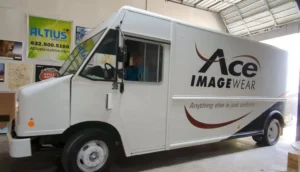Albeit many experienced sign experts know about the distinctions and best applications for the most commonly utilized interior sign materials of acrylic and photopolymer, guidance is important for those less knowledgeable about choosing the best material. In many applications, signs built of photopolymer acrylic materials actually dominate the ADA signage market and are the favored materials in many sign specifications.

Acrylic signs – An appealing and practical decision
When ADA and directional signage is required for safeguarded settings (emergency clinics, centers, and places of business), acrylic signs are frequently utilized. Acrylic signs with raised text applied to the sign face and the raster fit strategy for braille inclusion furnish a savvy sign arrangement with numerous alluring plan choices. Acrylic with a non-glare surface completion is accessible in 1/16, 1/8″, 3/16″ and ¼” thicknesses that can join subsurface illustrations using advanced printed, painted or applied vinyl beautification with the suitable ADA agreeable surface shine level. This material can likewise be done with surface applied paint, computerized printing or vinyl illustrations. The raised text uses 1/32″ thick ADA consistent plastic materials with high bond cement applied to the rear of the material then, at that point, connected to the sign face. For added insurance the text can be recessed by etching a region for a 1/16″ thick letterform that sets 1/32″ underneath the sign surface. Grade 2 braille utilizes acrylic braille globules that are embedded into a high resistance bored opening for exceptionally close fit. Many cover materials, for example, WilsonArt, ChemMetal and Pionite can be joined into acrylic sign plans to give an exceptional appearance.
Photopolymer – Signs for Tough Environments
Numerous unprotected conditions (schools, college buildings, community buildings, etc) require signs that furnish a stronger product. Photopolymer is a typical sign-making material that gives raised text and braille that is indistinguishable from the sign surface and makes it more challenging to eliminate the material parts of the sign. Photopolymer material can be used much like acrylic signs, such as composition or advanced imprinting on the sign face or opposite applied beautification (sub-surface).
Due to a higher natural substance cost and the extra time to process and complete the material, photopolymer signs are more costly than a traditional acrylic sign.
Determination of the appropriate sign material
Ordinarily the sort of office a sign is to be utilized in decides the kind of material to be chosen for the sign development. Acrylic signs work best in safeguarded conditions that have a decreased chance of the signs being damaged. Photopolymer could be utilized in all applications, particularly where a durable product is wanted and where defacement of the signs is an element. Settings, for example, schools and public structures are ordinary of offices that require miscreant safe signs.



